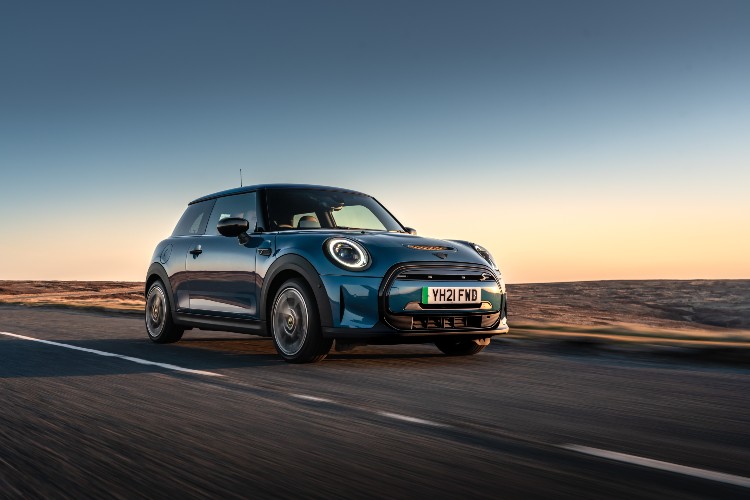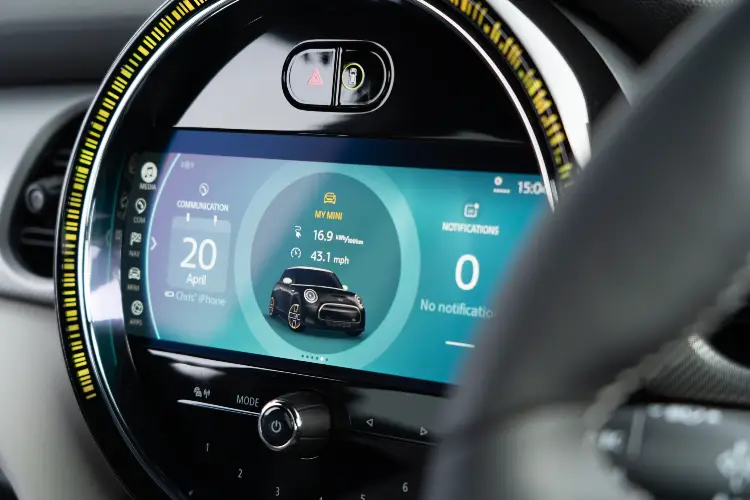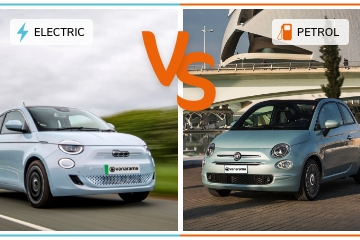It’s perhaps surprising that MINI took so long to add an electric version to its existing range of 3- and 5-door hatchbacks. This is, after all, a company that prides itself on having all five fingers on the pulse of what’s new and exciting. Still, now it’s here, the MINI Electric makes for an intriguing and cost-effective alternative to the petrol-fuelled hatch.
It seems as if, for once, MINI was caught on the hop. When others were busy launching electric cars, MINI was without such an offering until 2020, when it launched the simply named MINI Electric. No doubts about what this car is, then.
Even so, the MINI Electric is based closely on the petrol and diesel 3-door hatchback model. As a result, the battery is a lot smaller than most dedicated EV designs, such as the Nissan Leaf or Vauxhall Corsa-e or Renault Zoe. The upside, though, is that unusually for a MINI the EV model is much cheaper than most of its competition, including the equally style-conscious Honda-e.
The upshot of this is the Electric’s stiffest competition comes from within its own ranks in the shape of the MINI Cooper. While the Electric may be badged as a Cooper S, on price, spec and performance, it’s much more comparable to the petrol-engined 1.5-litre Cooper hatchback that we’ll look at here.
Design Differences
You’re not going to need a microscope to spot the MINI Electric) from the front. It has a somewhat piscine appearance due to its gawking plastic shroud that fits in where the Cooper’s more usual grille goes. It’s a design that some will love and others...not so much.
A distinguishing feature on higher trim versions of the Electric are the 2-tone ‘Electric Power Spoke’ alloy wheels. We suspect most Electric drivers will opt for these as they give the car a good chunk of its outer identity, though anyone looking to veil their green credentials can stick with the standard 5-spoke alloy wheels.
Other than some subtle ‘MINI e’ badging, which makes a welcome change from the proliferation of Union Jacks scattered over most MINIs, that’s about it for the exterior. Inside, the Electric has a dash showing range and battery charge, while the gear selector is lit up like Blackpool Tower.
The charging socket is hidden behind the same flap as you’ll find the petrol filler on other MINIs, which points to the Electric being based on the same platform as other MINI models. This is no bad thing when it comes to how the Electric drives, but it also impacts on battery size. The MINI EV can only rustle up a 32kWh battery, which is slightly smaller than even the Honda-e’s. It means the MINI Electric has a combined officially rated driving range of 145 miles, which is quite low by present standards.
Driving Differences
There’s a character to the way a MINI drives that is perfectly defined by the Cooper. It’s the way the car puts the driver at the centre of the action, so even hum-drum drives feel exciting and involving. It also means the driver is well able to judge the car into corners and make full use of the car’s fine balance of grip and poise. All of this happens without you having to think about it, which is the really clever bit of the Cooper’s design and set-up – you just get on with having a good time.
MINI has certainly worked very hard to instill this same sense of driver appeal into the Electric and, to a large degree, it’s been successful. There’s the same keenness in corners, good steering feel, and by EV standards the Electric is streets ahead of a Renault Zoe or Honda-e for zipping about in.
Yet, there’s no getting away from the weight of the battery pack and its effect on ride quality in the Electric. Where the petrol-powered Cooper only ever feels a touch crashy on the most pockmarked streets, the Electric has an underlying firmness that is there all of the time. Also, the Electric is refined, but not markedly more so than the Cooper thanks to its super-smooth 3-cylinder petrol engine.
The Electric’s 184hp motor gives it a clear performance advantage over the Cooper’s 136hp 1.5-litre petrol engine. Off the mark, the Electric squares away 0-62mph in 7.3 seconds, while the Cooper needs 8.2 seconds, or 8.1 if you choose the automatic gearbox in place of the 6-speed manual. However, it’s not all about numbers and the Cooper’s trad-tech petrol engine and gearbox give it a more immersive experience when you want to have a bit of fun, though that’s more of a criticism of EVs in general than the MINI Electric in particular.
Practicality Differences
There really is nothing between the petrol-powered MINI Cooper and its Electric sibling when it comes to space for passengers or their luggage. Both offer up plenty of space for those sitting in the front seats, with a good range of adjustment in the driving position to achieve peak comfort. In the back, it’s cramped for adults, but then who bought a MINI to cart their parents on holiday? It’s fine for young kids, so we’ll leave it there.
If you do go on vacation in the MINI, you’ll probably want to drop the 60/40 split and tumble rear seats for added storage space. With the seats up, you get 211-litres of space, which is okay for a top-up trip to the supermarket, but two weeks in Clacton is going to be a push without freeing up the full 731-litres. This is identical in both the Cooper and Electric.
Where the difference in practicality comes is the Electric tethers you much more to daily charging than most of its EV rivals. The 145-mile range is quickly depleted as you find the Electric encourages enthusiastic driving – it’s a MINI, after all – so the battery will need charging more often than the likes of the Zoe or a Hyundai Kona. If you can charge up at home or work, it’s not an issue, but it could be a bind for those without access to this sort of charge point.
Running Cost Comparison
You may have to hook up the MINI Electric to the mains more than some of its EV rivals, but its low list price rewards company drivers with a commensurately cheaper Benefit in Kind (BiK) payment every month. This works out at just £4.75 for a lower rate tax payer for a MINI Electric Level 1 as its zero tailpipe emissions means it’s taxed at just 1%.
Go for the petrol Cooper in its cheapest 3-door form and it emits 124g/km to bring a BIK liability of £84.15 each month, as it sits in the 28% bracket. These emissions also mean the petrol MINI driver pays £180 for the first year’s road tax where the Electric driver pays nothing.
However, the 1.5-litre Cooper is cheaper to insure thanks to its group 14 ranking, where the Electric sits in group 22. Some might find the Electric’s 145-mile combined battery range a chore, so the Cooper’s 51.4mpg and potential for 450 miles from a tank of unleaded is useful for anyone who routinely travels further afield.
Both of these MINIs come with a 3-year, unlimited mileage warranty, and the Electric has an 8-year, 100,000-mile battery warranty too. Servicing is based on use, but expect to visit a dealer every 12 months or 12,000 miles depending on which comes first.
Living With the Electric Car
The Electric comes with the MINI App that, like most EVs, lets you keep tabs on the car through your smartphone. You can use the app to check battery charge, range, and look at how efficiently you’ve been driving. It also allows you to schedule charging times to take advantage of cheap electricity tariffs, and you can pre-condition the car to your preferred cabin temperature while it’s still hooked up to the mains to maximise battery range.
MINI provides the Electric with a Type 2 charging cable as standard, as well as a get you out of trouble 3-pin domestic charging cable. Using this emergency cable will take 12 hours to charge the MINI from 0 to 80% battery capacity, so it’s a good idea to seek out a faster charger. MINI will sell you a BP Pulse Homecharge wallbox for £599, which is a 7.4kW unit that needs just over three hours to achieve the same 80% recharge. Plug into a 50kW public charger and that time is slashed to just 36 minutes.







